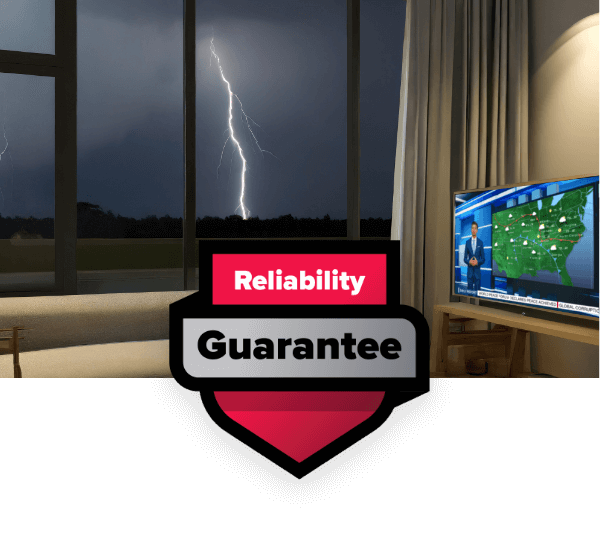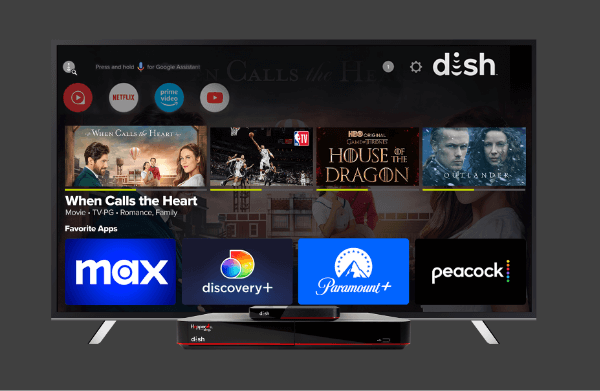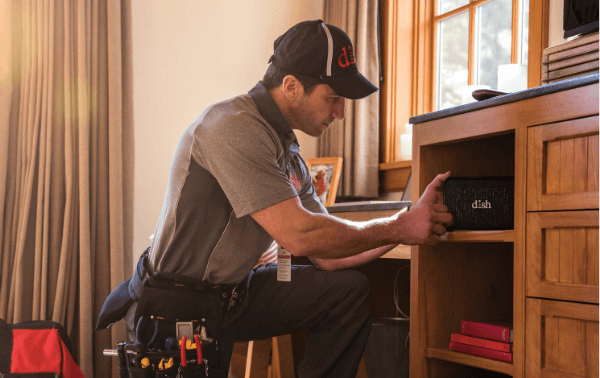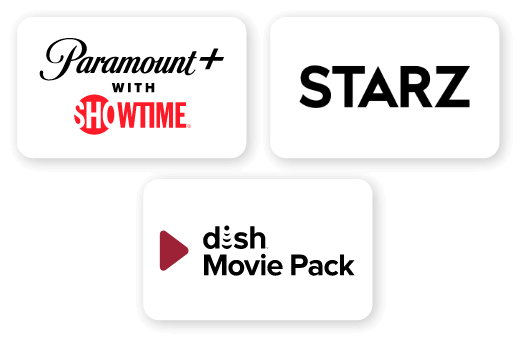Ultimate Wi-Fi vs. Ethernet Showdown: Discover Your Perfect Connection
Table of Contents
When it comes to connecting your devices to the internet, you have two main options, and we’re comparing them… Wi-Fi vs. Ethernet. Each has its strengths and weaknesses, and choosing the right one can dramatically improve your online experience. But which is better for your specific needs? Let’s explore your perfect connection.
What Is Wi-Fi?
Wi-Fi is a wireless networking technology that allows your devices to connect to the internet without using physical cables. Developed in 1997 by the Institute of Electrical and Electronics Engineers, Wi-Fi has evolved significantly over the years, with the latest versions (like Wi-Fi 6 and 7) offering stronger and faster connections than ever before [1].
Wi-Fi works by transmitting radio signals from your router to your devices. These signals travel through the air at either 2.4 GHz or 5 GHz frequencies, allowing you to connect from anywhere within range of your router. This convenience has made Wi-Fi the primary way most of us connect to the internet at home.
What Is Ethernet?
Ethernet is a wired connection method that uses physical cables to connect your devices directly to your router. Before Wi-Fi became widespread, Ethernet was the primary way to connect devices and access the internet.
When you use an Ethernet connection, data travels through a cable that runs from your device to your router. This direct, physical connection often results in faster and more reliable internet speeds compared to wireless alternatives. Your Wi-Fi router needs an Ethernet cable to connect to the internet in the first place!

The ultimate test
Wi-Fi vs. Ethernet Speed Comparison
When it comes to raw speed, Ethernet typically outperforms Wi-Fi. According to recent tests, Ethernet connections often deliver speeds much closer to your internet plan’s maximum than Wi-Fi does. This is because wired connections don’t have to deal with the interference and signal degradation that wireless connections face.
For example, if you have a 400 Mbps internet plan, an Ethernet connection might deliver speeds of 390 Mbps or more, while Wi-Fi might only give you 120-150 Mbps, depending on your distance from the router and other factors.
What’s even more important than the maximum speed is consistency. Wi-Fi speeds fluctuate constantly based on:
- Distance from the router
- Walls and furniture block the signal
- Interference from other devices
- Network congestion
Ethernet speeds, on the other hand, stay remarkably consistent. This makes Ethernet the better choice for activities where a consistent speed is crucial, such as online gaming or video conferencing.
Reliability
Reliability is another area where Ethernet shines. Since Ethernet uses a physical cable, it’s not subject to the same interference issues that can plague Wi-Fi connections. This means fewer dropped connections and more stable performance overall.
Wi-Fi signals have to navigate through walls, compete with other wireless devices, and sometimes deal with interference from your neighbor’s networks. All of these factors can lead to unstable connections, particularly in densely populated areas or homes with many wireless devices.
For critical applications where a stable connection is essential, like working from home, online gaming, or an important video call, Ethernet provides peace of mind that Wi-Fi sometimes can’t match.
Security
Security is a significant consideration when choosing between Wi-Fi and Ethernet. In simple terms, Ethernet connections are inherently more secure than Wi-Fi.
With Wi-Fi, your data is transmitted through the air, making it potentially accessible to anyone within range who has the right tools and knowledge. While modern Wi-Fi security protocols have improved significantly, wireless networks remain more vulnerable to interception than wired ones.
Ethernet creates a direct, physical connection between your device and the router. To intercept data on an Ethernet connection, someone would need physical access to the cable or network equipment—a much higher barrier than intercepting wireless signals.
For handling sensitive information, such as banking details or confidential work documents, an Ethernet connection provides an extra layer of security that can be valuable for many users.
Convenience
This is where Wi-Fi truly shines. The convenience of being able to connect to the internet from anywhere in your home—or even in your yard—is Wi-Fi’s greatest strength. No cables to trip over, no need to stay tethered to one spot, and the ability to easily connect multiple devices make Wi-Fi the go-to choice for everyday internet use.
Wi-Fi also makes it easy to connect devices that don’t have Ethernet ports, such as smartphones, tablets, and many modern laptops. With the growing number of smart home devices that rely on wireless connectivity, having a strong Wi-Fi network has become essential for many households.
Best Uses for Wi-Fi
Mobile Devices
Smartphones, tablets, and laptops benefit from Wi-Fi’s mobility. Being able to move around freely while staying connected is invaluable for these devices.
Smart Home Devices
Most smart home gadgets, from speakers and thermostats to doorbell cameras and light bulbs, rely on Wi-Fi connectivity. These devices are often placed throughout your home, making wireless connections essential.
Casual Browsing and Social Media
For everyday internet activities like checking email, browsing websites, or scrolling through social media, Wi-Fi provides more than enough speed and reliability while offering the convenience of mobility.
Light Streaming
For standard definition or HD streaming on mobile devices, Wi-Fi usually provides sufficient speed and stability, especially when you’re reasonably close to your router.
Best Uses for Ethernet
Online Gaming
Serious gamers benefit greatly from Ethernet’s lower latency (ping) and consistent speeds. In competitive gaming, every millisecond counts, and a wired connection can provide that crucial edge.
Video Conferencing
For important work calls or virtual meetings, Ethernet provides the reliability you need to avoid embarrassing freezes or disconnections during your presentation.
4K Streaming
For the highest quality streaming experiences, especially on large TVs or home theater setups, Ethernet ensures you get the consistent bandwidth needed for buffer-free 4K content.
Large File Transfers
When you need to upload or download large files for work or creative projects, Ethernet’s faster speeds can save you a significant amount of time.
Home Office Setups
For reliable work-from-home connections, especially for tasks requiring consistent internet performance, Ethernet provides the stability professionals need.
Wi-Fi vs. Ethernet Cost Considerations
Wi-Fi Costs
Setting up Wi-Fi is relatively affordable, with installation costs typically ranging from $45 to $100. Most internet service packages include a router with Wi-Fi capabilities. The ability to connect multiple devices without additional hardware makes Wi-Fi economical for most households.
However, to eliminate dead zones or extend coverage in larger homes, you might need to invest in Wi-Fi extenders or a mesh network system, which can add to the overall cost.
Ethernet Costs
Implementing a full Ethernet setup throughout your home can be more expensive. Ethernet ports typically cost between $100 and $200 per installation, and you may need a switch box to connect multiple devices.
For existing homes without built-in Ethernet wiring, running cables can be labor-intensive and potentially costly. However, for specific devices like gaming consoles or desktop computers, simply purchasing a single Ethernet cable (typically $5-$20, depending on length and quality) is an affordable solution.
Understanding Ethernet Cable Types
If you decide to use Ethernet for some of your connections, it’s important to know that not all Ethernet cables are created equal [2]. Here are the most common types:
CAT5
Supports speeds up to 100 Mbps. This older standard is becoming obsolete for modern internet connections.
CAT5e
Supports speeds up to 1,000 Mbps (1 Gbps). This is sufficient for most home internet connections today.
CAT6
Also supports 1 Gbps but with better performance over longer distances and better protection against interference.
CAT6a
Supports speeds up to 10 Gbps over distances up to 328 feet.
CAT7/CAT8
Support very high speeds (up to 40-100 Gbps), but are typically only necessary for specialized commercial applications.
For most home users, a CAT5e or CAT6 cable will be more than sufficient. If your internet plan offers speeds of 100 Mbps or more, use a CAT5e cable to take full advantage of your connection.

Get the best of your connection
Optimizing Your Connection
Whatever connection type you choose, here are some tips to get the best performance:
For Wi-Fi:
- Position your router centrally in your home for the best coverage
- Keep your router away from interference sources like microwaves and cordless phones
- Use the 5 GHz band when possible for faster speeds
- Consider a mesh network system for larger homes
- Regularly update your router’s firmware
For Ethernet:
- Use the appropriate cable category for your internet speed
- Keep cables away from power lines to minimize interference
- Use a switch if you need to connect multiple devices
- Consider flat Ethernet cables if aesthetics are a concern
- Label your cables to make troubleshooting easier
Find the Best Internet Provider in My Area Now!
Now that you understand the differences between Wi-Fi and Ethernet, you may wonder if your current internet service can deliver the speeds you need for your preferred connection method.
Whether you’re a gamer needing the lowest possible latency, a remote worker requiring reliable video conferencing, or a family streaming multiple 4K shows simultaneously, having the right internet service provider is crucial.
Enter your zip code here to find and compare the best internet providers available in your area. Get matched with plans that offer the speeds, reliability, and value you need for your connected home.
Sources
[1] https://www.wifirst.com/en/blog/thehistoryofwifitechnology
[2] https://tripplite.eaton.com/products/ethernet-cable-types






 Call
Call 

 Access Your Account
Access Your Account